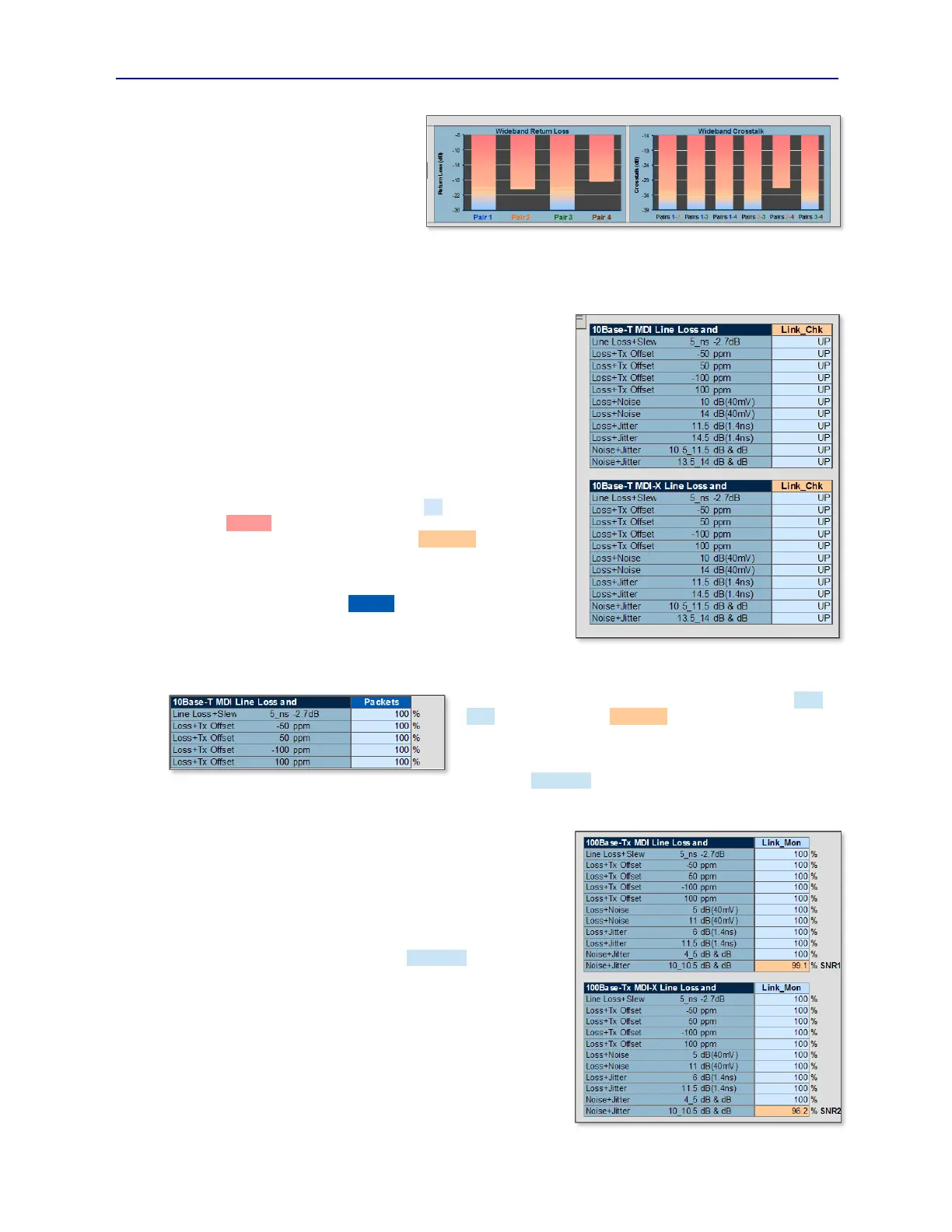PVA-3000 Reference Manual
December 2, 2019 Sifos Technologies
Bulk, or Wideband Crosstalk is evaluated
against test limits that are largely
formulated based on a large amount of
empirical data including many
repeatability studies. The hypothetical
performance limit of a port-under-test
wideband crosstalk measurement was
assessed earlier in Section 1.3.9. Since
the Bulk Crosstalk meter has a
measurement floor just below that performance limit (-39 dB floor versus –37.8 dB limit), the limit criteria must be
largely based on repeatability and accuracy of the metering with some consideration of the hypothetical impact of low
crosstalk levels to SNR. Generally, the report will indicate marginal performance in the –34 dB region and flag
specification failures in the
–31 dB region.
5.5.3. Receiver Test Results
Receiver Test results are organized into three pairs of tables, one for
the pva_rx_10 (10BaseT) test results, one for pva_rx_100
(100BaseTx) test results, and one for pva_rx_1000 (1000BaseT) test
results. Each of these tests and their associated impairment
conditions were described earlier in Section 5.4.
The 10BaseT results (see Figure 5.12) simply indicate whether link
was maintained under each impairment condition to the port-under-
test. Link performance of less than 99% link UP results would
produce a DOWN indication in this table for the associated
impairment condition. The header notation Link Chk signifies this
particular reporting behavior as discussed earlier in Section 5.4.1.
If receiver tests are performed using the Packet Flow alternative,
then the header notation will be Packets (see Figure 5.13) and the
test results will be in percentage of transmitted packets that were
received
at the calibration partner port.
The 100BaseT results (see Figure 5.14) can appear with a Link
Mon column header or a Link Chk column header similar to the
10BaseT results when the Link Monitor method of testing is
applied. The choice is based on the outcome of the 100BaseTx
link stability pre-assessment described earlier in Section 5.4.2.
When then Link Mon header appears, the impaired receiver
performance will be reported in percentages as reported by the
Link Stability measurement. Otherwise, reporting is the same as described above for the 10BaseT receiver test.
The Packet Flow alternative applied to the 100BaseTx receiver test
will also report in percentage units as shown in Figure 5.13 where the
reported value is percent packets received at the calibration partner
port.
The 1000BaseT results (see Figure 5.15) can have the same
properties as the 100BaseTx results tables, though the likelihood of
the Link Monitor method not reported as Link Mon is very low.
This is because IEEE 802.3 specifications defined and required the
underlying Remote Rx Status indication used in Link Stability
measurements with 1000BaseT testing (see Section 5.4.3).
As with 100BaseTx receiver testing, the Packet Flow alternative
applied to the 1000BaseT receiver test will also report in percentage
units as shown in Figure 5.13 where the reported value is percent
packets received at the calibration partner port.
Limit thresholds for impaired receiver testing are independent of
metering method, that is, Link Monitor or Packet Flow. The
Figure 5.11 Return Loss and Crosstalk Bar Graphs
Figure 5.13 Testing Results with Packet Flow
Figure 5.12 10BaseT Receiver Test Results
Figure 5.14 100BaseTx Receiver Test Results
